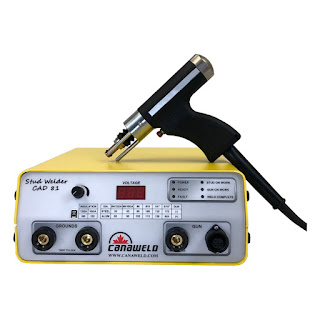What is stud welding, and its advantages?
Stud welding is a single-sided fastening method that connects a metal part to another metal component, typically a metal sheet called the parent material. A strong arc of electricity created by a positive electric current is used to fuse parts together.
Both metals reach their melting points as a result of the arc's heat. The part and the parent material are pressed together to form a secure joining and become one once a molten pool has formed.
Here are some of the advantages of stud welding:
1. Adaptable.
A stud welder is suitable for a wide range of metals and stud sizes. If the right equipment is used, stainless steel, mild steel, aluminium, copper, and brass can be stud welded effectively. If you have the right attachments and equipment, you can use threaded, unthreaded, or internally threaded studs with diameters ranging from 1 to 25 mm.
2. Accessible.
Workers don't have to twist and turn themselves to make a good weld with stud welding. They only require access to one side. There is also equipment available to make moving even simpler.
3. Hole free
When the stud is fused to the metal sheet, no holes are created, so the metal sheet does not need to be cleaned or finished after the operation. As a result, the possibility of the sheet leaking or weakening is removed.
4. Appearance.
Stud welding is preferred because the fastening process is only carried out on one side of the parent material, resulting in a largely "invisible" effect. On the reverse side, it leaves only minor marks.
Conclusion
Get the best stud welding kits available at Canaweld. They have a wide range of stud welder gear on their website.




Comments
Post a Comment